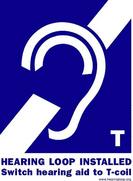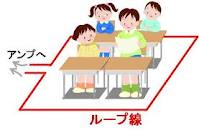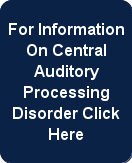Long Island (516) 731-5868
New York City (718) 641-3817
Hearing Loops In Schools
Children with hearing loss, and auditory and/or language processing disorders require accommodations and modifications in the classroom in order for the child to be able to hear, process and understand the information presented to them.
According to Section 504 of the Rehabilitation Act of 1973 and, the American Disabilities Act (ADA) Obligations of Public Schools, “auxiliary aids and services” must be provided to students with hearing impairment or deafness. In addition, these obligations also apply to parents and others who are entitled to equal access and an equal opportunity to participate in public school services, programs and activities.
Title II of the ADA, 42 U.S.C./12101-12213 requires comparable access by all state and local government programs.
According to the American Speech-Language-Hearing Association (ASHA), Hearing Assistive Technology Systems (HATS) are devices that can help an individual with hearing loss, deafness or auditory processing difficulties communicate more effectively in day-to-day situations. These assistive devices can be used with or without hearing aids or cochlear implants. The purpose of these devices is to reduce stress and fatigue, and to promote improved listening and better communication.
The Audio Induction Loop System is an acceptable device which meets requirements for providing assistive devices for the hearing impaired as well as individuals with auditory processing deficits.
Audio Frequency Induction Loop Systems are relatively simple and are essentially maintenance free. Electromagnetic waves are produced by a sound source such as a microphone used by the teacher. There is a copper wire which is looped around the perimeter of the classroom. This copper wire transmits the signal (speech) directly to the listener via a hearing aid, cochlear implant or neck loop receiver worn by the student. Hearing aids, cochlear implants or the neck loop receiver must contain a telecoil in order to receive the signal. Then the speech is heard clearly and distinctly.
Speech is delivered directly to the hearing device in an undistorted form which is tailored to the student’s individual hearing needs. The induction loop system works on a universal signal and does not depend on multiple frequencies as with FM hearing enhancement systems. The signal is not affected by the distance the listener is from the sound source or by interfering background noise. As long as the student is within the looped area, the signal will be transmitted clearly and distinctly.
The system is cost effective since the only requirement is to have a hearing device equipped with a telecoil. The system can be configured in phased array and low-spillover designs so sound is confined to particular areas and is not shared room to room. Finally, the use of induction loops within the classroom are designed to be inconspicuous, therefore the student does not feel uncomfortable using the loop system since the signal is transmitted directly to their own hearing device or a small neck loop worn around the student’s neck.
Our induction loop systems are designed and installed to meet or exceed the IEC 60118-4 standard. In addition, the use of induction loop systems in the school setting will meet ADA requirements for the student with hearing impairment and/or deafness.
Please call us to schedule an appointment to discuss how a custom induction loop system can be designed especially for your school.
In New York City (718) 641-3817
On Long Island and CT (516) 731-5868





